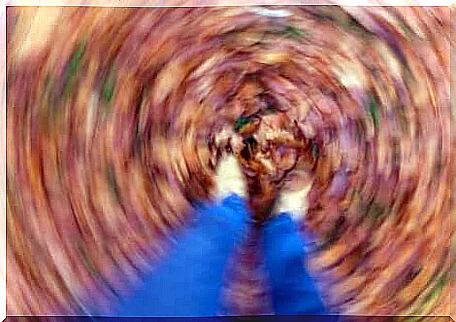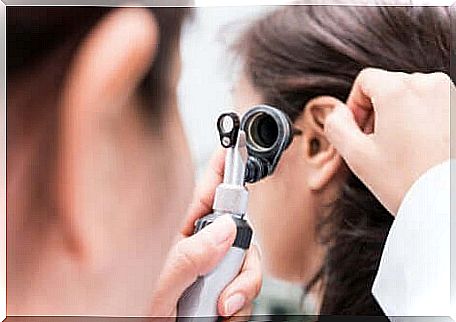Positional Vertigo: How To Prevent And Treat It

One in three people experience at least one episode of simple positional vertigo in their lifetime. It is mostly a passing phenomenon and without major consequences. This condition was first described by Barany in 1921; there is currently no specific treatment.
It is estimated that 2.5% of the population will have an intense crisis of positional vertigo in life. The incidence increases with age: up to 9% of those over 60 suffer from this problem which is therefore a reason for a rather important medical visit.
What is positional vertigo?
It is defined as an illusory sensation of movement, of the environment or of the person. The sensation is of a rolling rocking, a movement of the body or of the floor. It is usually short-lived, but recurring.
We speak of positional vertigo, in particular, when the illusion of movement occurs by changing the position of the head. The sensation ranges from mild to intense; although it is a nuisance, it is rarely considered serious.
Vertigo can be divided into two categories: peripheral and central. Positional vertigo is peripheral, which is also the most common and not dangerous. Central vertigo is more severe and is linked to a brain pathology. Episodes usually last longer and are more intense.

Identify the problem
The most obvious symptom of positional vertigo is a sensation of illusory movement with loss of balance that is typically perceived as dizziness. Sometimes it is accompanied by nausea or vomiting, closed ears, rapid eye movements and lightheadedness.
These episodes usually occur suddenly, last less than a minute, and vary in intensity; they are usually triggered by the movement of the head. Dizziness can recur, sometimes after a period of absence.
The doctor can reach the diagnosis through a clinical interview accompanied by physical evaluation. If in doubt, tests such as electronystagmography or videonystagmography, or magnetic resonance imaging (MRI) can be used.
How to prevent positional vertigo
In over half of the cases it is impossible to determine the cause of positional vertigo. In general, there are no relevant risk factors, although it is more common in those with a family history, have suffered from ear infections, or have received a blow to the head, even if it is not serious.
Much of the vertigo is linked to anomalies of the inner ear, where there are tubes filled with fluid that shake during movement. If there are small floating fragments of calcium in the liquid, called otoliths, the brain may sense a shift even if the person is not moving.
Since these vertigo are directly associated with head movement, the best way to prevent them is to avoid quick or abrupt movements. It is also advisable to avoid stress or the consumption of substances that excite the nervous system.

Treatment
Medicines can help control dizziness; the Epley maneuver is considered to be very effective in treating symptoms. The purpose of this maneuver is to remove the otoliths from the ear canals so that the false sensation of movement is no longer produced.
It is performed in the clinic and consists of turning the patient’s head to the side where the vertigo occurs. Afterwards, the patient is quickly laid on his back. Symptoms are likely to become more intense; the head is then slowly turned in the opposite direction, along with the body.
At the end the patient will be asked to sit down and the exercise will be repeated. Repeating the maneuver leads to the disappearance of dizziness. If it recurs in the following weeks, it will be possible to carry out a new maneuver.
The specialist will decide the need and frequency of the maneuver, but in some cases it may not be enough. In case of recurring dizziness, a thorough evaluation will help to rule out more important causes.









